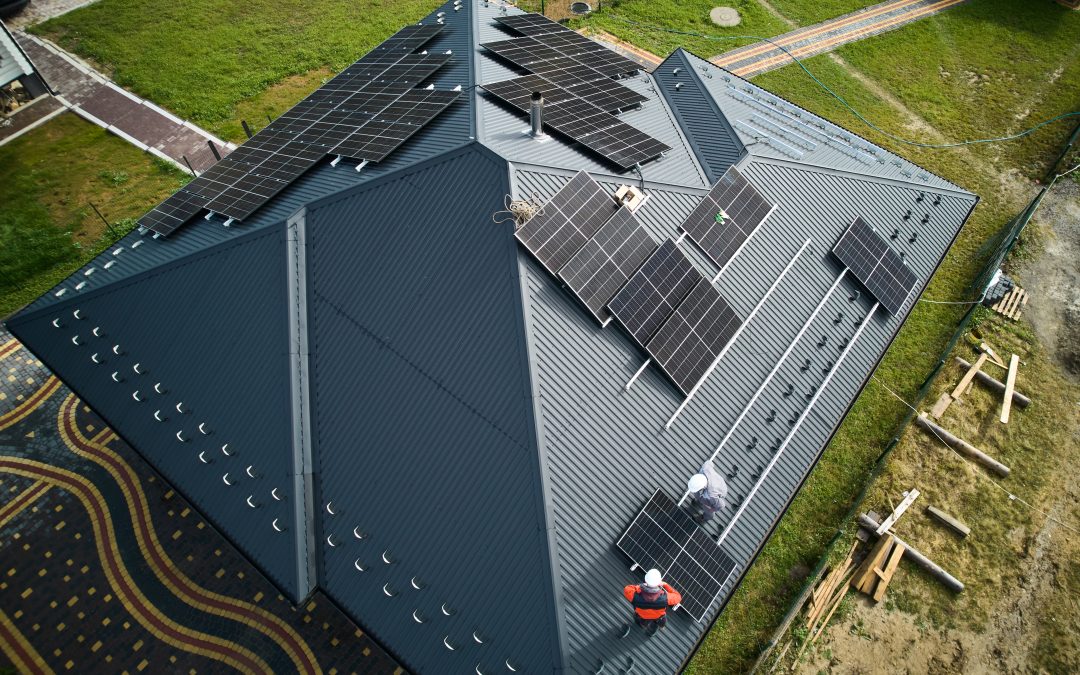Solar Panels: Leading the Renewable Energy Revolution
As the world embraces renewable energy, solar panels have emerged as the most popular method for harnessing solar power. The rise and future of solar energy has grown rapidly, playing a crucial role in the shift towards sustainable energy. With impressive advancements and strong growth projections, solar PV is set to continue its dominance in the renewable energy sector.
Evolution of Solar Panel Efficiency
Solar panel efficiency has significantly improved over the decades. In the 1960s, Hoffman Electric achieved 14% efficiency in PV cells. By 2015, companies like SolarCity and Panasonic surpassed 22% efficiency. Today, commercial panels generally range between 17% to 20% efficiency, with cutting-edge PV cells nearing 50% efficiency. This dramatic improvement is a testament to the ongoing research and development in the field.
Higher efficiency means more energy production from the same amount of sunlight, making solar power more viable and attractive. As research continues, we can expect even more efficient solar panels, further driving down the cost per watt and making solar energy accessible to a broader audience. This upward trend in efficiency is expected to continue, as advancements in materials science and manufacturing techniques promise further gains.
Solar Energy’s Growth Trajectory
The growth of solar energy is projected to be immense, with global installations potentially reaching 4.7 terawatts by 2050. According to the International Energy Agency (IEA), solar PV systems installed in 2020 alone prevented approximately 2.6 billion tonnes of carbon dioxide emissions, akin to removing 560 million cars from the roads for a year. This highlights solar energy’s critical role in mitigating climate change and reducing our carbon footprint.
Global Solar Photovoltaic Statistics
The statistics surrounding the solar PV industry are nothing short of impressive. By 2022, the global cumulative solar PV capacity reached 1,177 gigawatts, with 239 gigawatts of new capacity installed that year alone. This represents a significant increase from 2003, when global capacity was less than 2.6 gigawatts.
- Material Recycling: 90%-97% of solar panel materials can be reused.
- Efficiency: Current commercial panels are 15%-20% efficient.
- Global Leaders: China leads with 306.9 gigawatts, followed by the USA, Japan, Germany, and India.
- US Generation: In 2022, the US generated 145.6 terawatt hours from solar power.
- Market Growth: The smart solar power market is expected to reach £36.25 billion by 2031, growing at a 13.6% CAGR.
Economic Impact and Job Creation
The solar industry is a major job creator, employing over 3 million people worldwide. The International Labour Organization (ILO) reported that the renewable energy sector employed 13.7 million people in 2022, with solar energy providing 4.9 million jobs. Women constitute 40% of the workforce in the solar PV industry, significantly higher than in other renewable sectors.
As the industry continues to grow, the demand for skilled workers in the solar PV sector is expected to increase. This job creation extends beyond installation and manufacturing to include roles in research, development, and project management. The economic impact of the solar industry is substantial, contributing to economic growth and stability in many regions.
Solar Power by Country
Several countries lead the way in solar power production, showcasing the global commitment to renewable energy. China is the clear leader, with 306,973 MW of solar capacity, followed by the USA with 95,209 MW, Japan with 74,191 MW, Germany with 58,461 MW, and India with 49,684 MW. These countries have made significant investments in solar infrastructure, driving innovation and adoption on a massive scale.
UK Solar Market Overview
In the UK, the solar power market is experiencing rapid growth, with a 23.53% CAGR expected over the next five years. As of May 2023, the UK registered 15.1 GW of solar capacity across 1,334,453 installations. The country aims to reach 40GW installed capacity by 2030. This ambitious target reflects the UK’s commitment to reducing carbon emissions and transitioning to renewable energy sources.
Current and Future Trends in Solar PV
Solar energy is expected to dominate future energy production. Innovations include longer-lasting solar cells, flexible solar panels, and panels that track the sun. These advancements will make solar power more efficient and versatile, suitable for a wider range of applications. Solar PV investment is projected to grow significantly, with a global penetration rate increasing from 10% in 2022 to 15% by 2033.
Integrating solar PV with other renewable energy sources, such as wind and hydro, will also become more prevalent. This hybrid approach allows for a more reliable and consistent energy supply, minimizing the impact of intermittency. Furthermore, the adoption of innovative grid technologies will enable better integration of solar PV into existing energy infrastructures, optimizing the use of solar electricity and improving overall grid stability.
Solar PV is poised to lead the transition to a more sustainable future, reducing greenhouse gas emissions and combating climate change. As technology advances and costs decline, solar energy will become increasingly accessible, driving further growth and adoption worldwide. The solar industry’s rapid growth, combined with its environmental and economic benefits, underscores its critical role in shaping a clean energy future.


Recent Comments